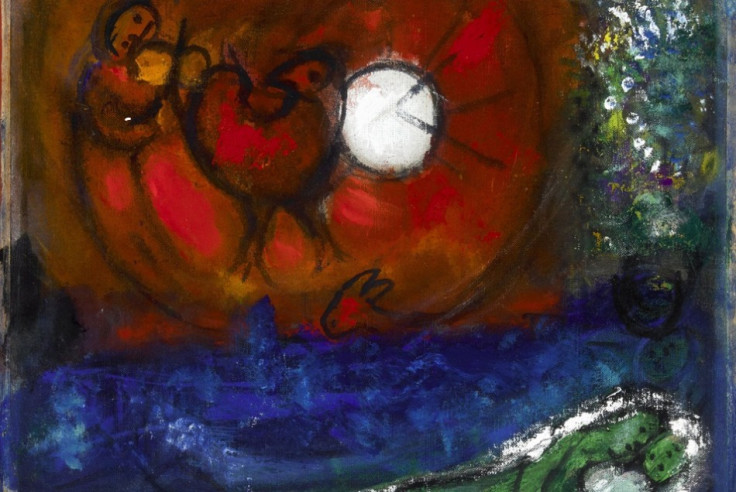Marc Chagall and Joan Miró’s ‘Turmoil’ Artworks Lead Bonhams Sale

Exclusive personal artworks by two of the great innovators of 20th century art, Joan Miró and Marc Chagall, lead Bonhams Impressionist and Modern Art sale in London on 19 June.
The artwork Femme et oiseau devant le soleil by Joan Miró was painted in December 1942. The masterpiece reflected the artist's signature style, which he adopted in the early 1940s after fleeing Nazi occupied France.
According to Bonhams, it was a time of great personal crisis and introspection for the artist and the works from this period represent his escapism from bleak reality into a fantasy world, where he was immersed in nature's beauty.
The depiction of a woman with a bird against the background of the sun builds on the iconography Miró adopted in his influential series of works, Constellations, painted in 1940 and 1941. These are themes which dominated much of his output for the rest of his life. The work, in pencil, charcoal, black ink and watercolour on paper, is estimated at £300,000-500,000.
Chagall owed a similar debt to the deep-rooted sense of folklore and religious heritage that his family had nurtured for centuries, which is so apparent in his 1956 painting Etude pour la nuit de Vence.
Estimated at £200,000-300,000, the artwork was painted by Chagall in the south of France, where he had settled on his return to the country from wartime exile in the United States. The painting is regarded as his own deeply felt emotional experiences.
In 1944, when Chagall and his wife of 30 years, Bella, were preparing to leave America and settle in France, she died unexpectedly of a viral infection. The penicillin needed to treat it was reserved for the military and permission to release a supply for civilian use came too late.
The deep tensions which Chagall experienced throughout this period can be seen in the choice of motifs depicted in the top left of Etude pour la nuit de Vence, according to Bonhams. At the bottom of the canvas is a beautifully haunting image of a couple, who lie locked in an embrace and somewhat hidden within the landscape.
© Copyright IBTimes 2025. All rights reserved.





















